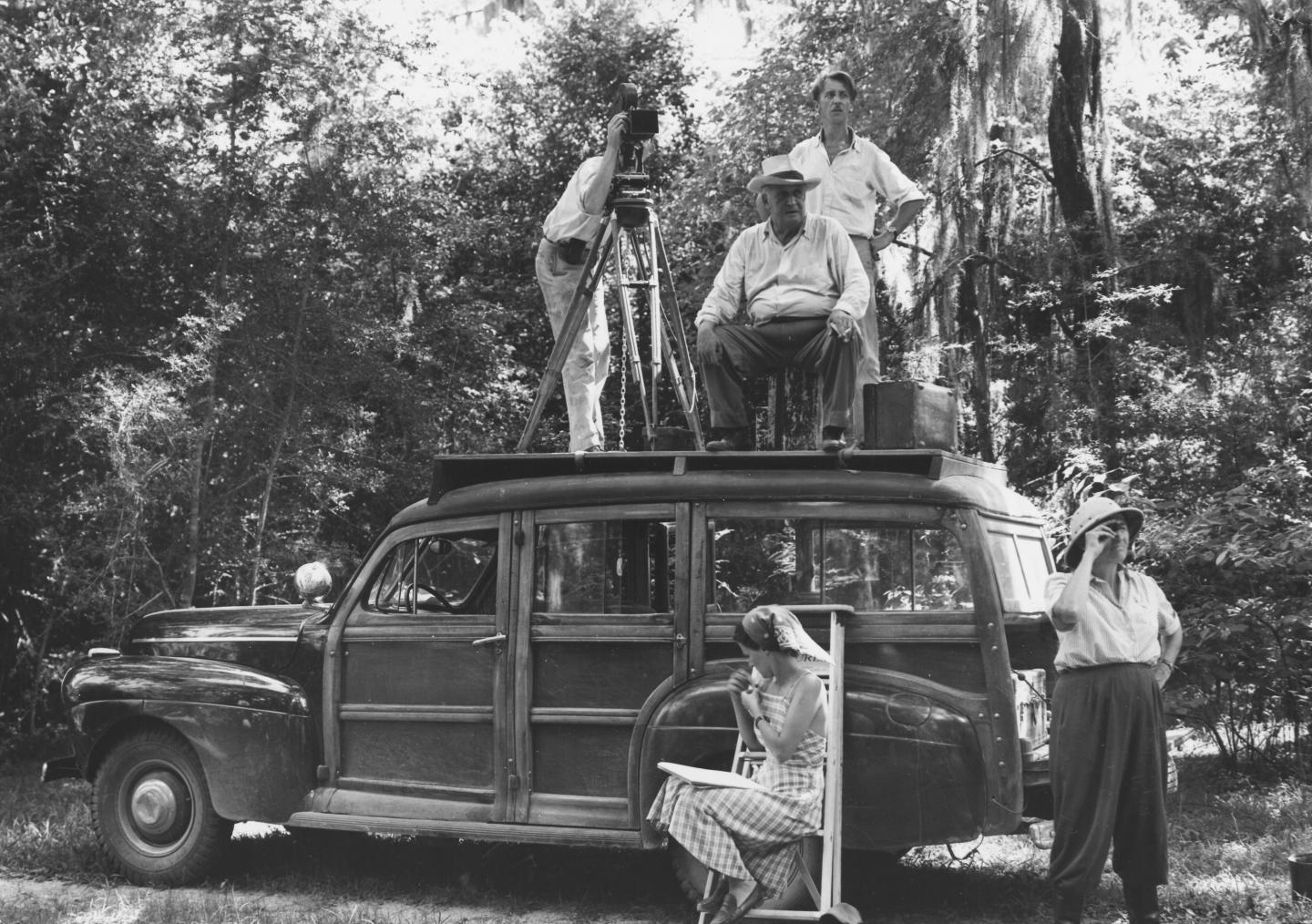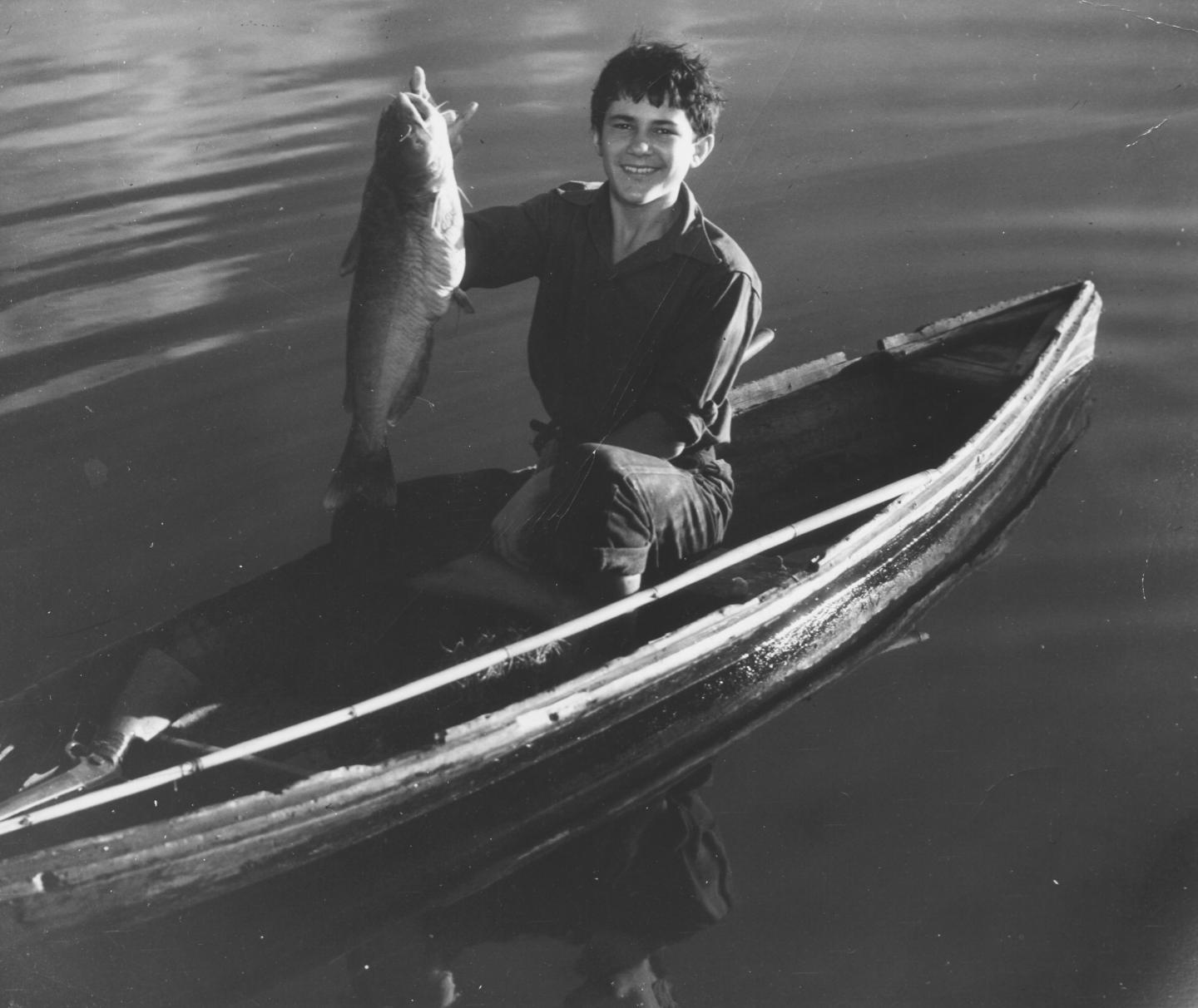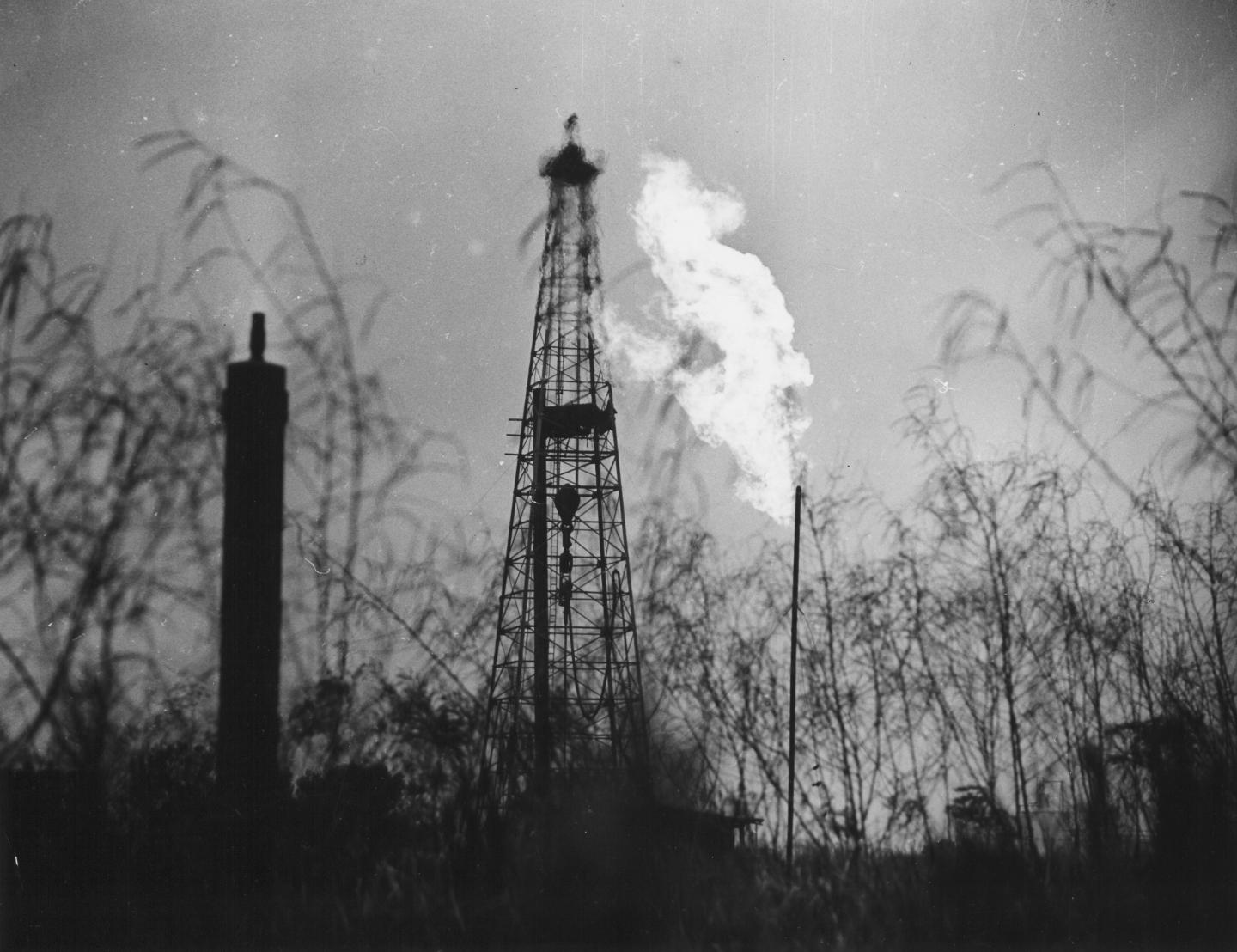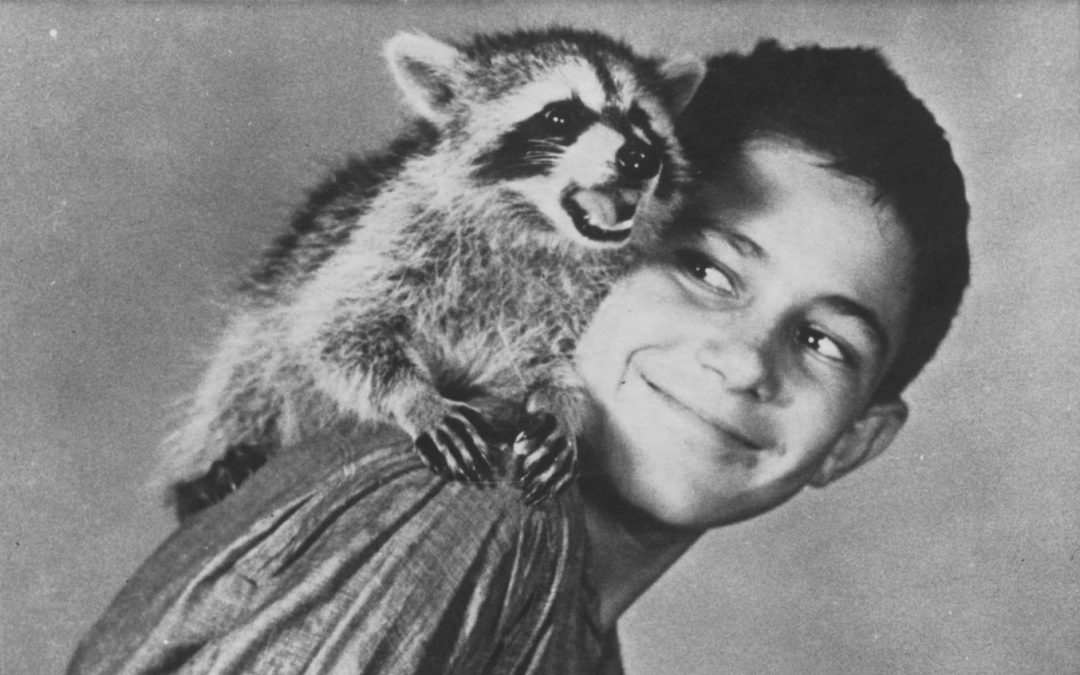By Patrick Russell, BFI
Photo: Louisiana Story (1948) © Preserved by the BFI National Archive
In 1952 it was voted the fifth greatest film of all time in the Sight and Sound poll, but today it’s all but forgotten. What’s behind the changing fortunes of Robert Flaherty’s Big Oil-sponsored nature drama Louisiana Story?
What happened when a pioneer of ethnographic documentary met a megabucks oil corporation? Several things, but one of them was that the resulting feature film Louisiana Story (1948) was listed, in 1952, in Sight and Sound’s first ever film critics’ poll. At number 5. That’s right: according to cinema’s leading critics seven decades ago, said auteur Robert Flaherty had just four years earlier directed the fifth greatest film ever made.
In each subsequent decade, Flaherty’s film slipped down the rankings. Just three critics (that’s 0.18% of the 1,639 participants) voted for it in Sight and Sound’s mammoth 2022 poll. As part of the BFI Film on Film Festival, Louisiana Story gets a rare big screen outing: a fine opportunity to reappraise this increasingly forgotten feature. A curate’s egg and all the more fascinating for it, it portrays (via engrossing documentary images) the arrival of oil production (depicted as benign) in swampy Louisiana and its impact (awkwardly fictionalised, via casting, scripting and staging of non-actors) on a Cajun family. At the heart of the film, conveyed via a rare and graceful lyrical impressionism, there’s an almost mystical relationship between the boy of the family, incoming industry and unspoilt nature.
So what is this thing? Documentary or drama? Classic or curio? Pantheistic prose-poetry or petro-propaganda? Crude? Or refined? I caught up with Tim Langford, a director and producer in today’s busy corporate film industry, who has studied the film’s history.
– Patrick Russell, BFI senior curator (non-fiction)
Tim Langford (Filmmaker & EVCOM Member) on Louisiana Story
Who was Robert Flaherty?
Flaherty was an American independent filmmaker who established a prestigious cultural reputation with two silent films, Nanook of the North (1922) and Moana (1926). Moana was the first film referred to in print as a ‘documentary’ thanks to John Grierson reviewing it using that term. Before that, Nanook had been a sensation, the first feature-length ‘documentary’ to find an enthusiastic global audience. Significantly, it was wholly financed by a fur-trapping company, an early form of cinematic corporate sponsorship. Today we would look back at these genres, categorised as ‘actualities’, through a more critical lens and might describe them as more akin to today’s ‘docu-fiction’.
Fast-forward to the late 1940s. How did Big Oil come to finance Flaherty making Louisiana Story?
Standard Oil New Jersey (SONJ) was a behemoth (Esso was a well-known brand of theirs) owned by John D. Rockefeller, but in the eyes of some political and journalistic opinion-formers a reckless, corrupt company profiting off the American people. This tension came to a head in 1942, as the USA entered the war, when SONJ was accused by the government of treasonous collaboration with Germany. The resulting reputational fallout and threat to profits led to SONJ hiring prominent PR guru Earl Newsom, and following public opinion surveys they instituted a visual arts strategy headed by liberal photographic curator Roy Stryker.
Surveys identified the opinion-forming critics as being in “that part of the public with aesthetic interests”. Stryker persuaded Flaherty to meet the PR team, who bought into the idea that an ‘auteur’ could create a piece of art that would appeal to that “aesthetic” demographic. Contracts and memoranda reveal that SONJ believed “Mr Flaherty’s name on the film and the recognised high level of his work, will assure both critical and popular acceptance and freedom from any suggestion of commercialism” and “will result in a permanent and artistic record of the contribution which the oil industry has made to civilisation”.

Robert Flaherty in production on Louisiana Story (1948) © Preserved by the BFI National Archive
Tell us how the production proceeded.
Flaherty was guaranteed a free hand to craft his signature film. He wrote the storyline and hired his own team, but also – apparently compliantly – wrote to SONJ: “I believe that the subject of bringing in a[n oil] well which, if you will remember, you, yourself, suggested, is a great subject…”
Early on, Flaherty proposed that the film would feature real oil-workers playing the parts and two main characters, “the young exploring geologist and the hard-boiled old driller,” in a story “of trials, failures and ultimate triumph”. These characters didn’t appear in the finished film. But crucially, the film would also include a social dimension, the impact of oil on “a little community”. The director also promised there would be sequences that illustrated the “vast importance of oil to the world” and that he would deliver two further short films. The total cost of three films, he wrote, would be $150,000 “at most”. That in itself was a lot of cash, but the final cost was in fact $258,000 – over £2.5 million in today’s money. I’m pretty sure that makes it, even to this day, the most expensive corporate film ever made. And in the end Flaherty delivered the feature only, not the two shorts.
I was told directly by Flaherty’s director of photography Richard Leacock (later a pioneer of ‘Direct Cinema’ documentary, a very different beast than Flaherty’s docu-fiction hybrid) that the director had no interest in these other films.
The small production unit instead spent months in the swamplands making a quintessential Flaherty movie about the relationship of a young, innocent boy (cast locally) with a crew of oilmen (provided by SONJ affiliate Humble Oil of Texas) prospecting for petroleum in a pristine wilderness. There are accounts of how client reps would turn up at the shoot and Flaherty would charm them, sharing a few sequences in the cutting room, and they would go away all smiles.
Nevertheless, Louisiana Story’s plot had changed from the big picture ‘epic sweep’ desired by SONJ and promised by the director to what Leacock dryly reflected as being the essence of Flaherty’s worldview: “All his films see the world through the eyes of a boy.” On the film’s release, the sponsor boasted that Bob had delivered a great film, a “work of art”, because “we left Flaherty alone”. Flaherty, riding the publicity wave, confirmed that they “never interfered a bit”.
Actually, SONJ sent lengthy notes during the shooting requesting changes – for example, asking could Flaherty include “animal stuff towards the end […] so that those who love the animal stuff won’t feel let down?” and noting “if the driller […] could tell the boy, ‘This well is costing us a quarter of a million dollars’, it would make the Humble people very happy.”
We’ve all been there.
Indeed. You’ve spent much of your own career making films for corporate clients – oil companies like BP included – and thinking about their ethics and aesthetics. As a practitioner, what fascinates you about Flaherty and Louisiana Story?
Well we, I, are all compromised and of course so was Bob, but I would say in this case he pretty much did what he wanted and the client couldn’t touch him. What interested me about Flaherty was that throughout his career he never fitted in. He wasn’t Hollywood: not one of them. And he was never part of some movement: his peers in the documentary and industrial film sectors found him a sort of iconic oddity. It’s not that they didn’t have respect for him, but he didn’t quite fit with them either; they viewed his working methods and mentality as singularly unfit to work for organisational sponsors.
Grierson was exasperated by him because of that. For example, Bob didn’t like scripts. On this film, he kept changing the storyline to fit his sensibilities, even making up dialogue on the spot. But at the same time he was telling the sponsor what they wanted to hear in grandiose terms.

Louisiana Story (1948) © Preserved by the BFI National Archive
I love Flaherty’s almost spiritual feeling for the natural world – the wilderness – and for ethnography, and his desire to evoke these visually. Bob had a point of view, a thesis if you will, formed as a child travelling with his father up in the Canadian wilds. And he did all he could to re-imagine those childhood feelings in the stories he told, or impose them on to them. Many are rightly critical of that, ideologically. He was a loner in a paradoxical way: a genuine independent yet frequently dependent on corporate sponsors (private and public sector) to finance him. He didn’t set out to make his own films so much as hope someone would hire him so he could realise his artistic vision.
Because of all that, Louisiana Story is a window on a fascinating network of relationships and motivations. In the data collected about its impact there’s an army report citing the film’s political value (bear in mind this is the early postwar world): “As a potential tool in the re-orientation program of this agency in the Occupied Territories of Germany, Japan, Austria and Korea […] the sequences between the landowner and the company imply fair dealing and man-to-man relationship rarely associated with negotiations carried on with an impersonal corporation.” So the filmmaker used an oil corporation to fund his artistry, they used him to enhance their reputation with Americans, and America in turn then used the end-product to enhance its reputation with the rest of the world. Beat that!
But beneath all that is the filmmaker himself. Some called Flaherty a ’Sunday painter’, but I totally sympathise with him as a maverick outsider, a lone wolf (except for his collaborator wife Frances, co-writer on this film) driven by childhood inspirations, and not least because his films, though flawed, have moments of great beauty.
In my darker moments I quite identify with Flaherty actually. I know there was something sad about him in the final years, and I feel that way too sometimes.
In 1952, critics voted Louisiana Story the fifth greatest film of all time. Today, many cinephiles have never heard of it. How might we account for this spectacular fall from grace?
It was in recent memory in 1952, and that generation of cineastes had been shaped by similar experiences to Bob Flaherty and probably loved his oeuvre. But then the world changed. His worldview, working methods and ethos came to look dated, out of step with a society in growing fear of nuclear annihilation. He wasn’t around to defend his film either (he died in 1951; I wonder if that influenced the 1952 vote?), so who knows if he and the film would have been rediscovered later with a Flaherty revival? I also think today that bits of Louisiana Story feel like one of those Disney nature films that they churned out from the 1950s, though Flaherty’s production standards are far higher.
In any case, although America, especially, didn’t quite fall out of love with big business, the environmental movement took off, and oil didn’t mix well with the resulting politics and culture. After that, Louisiana Story’s vision of harmony between ‘man and nature’ would have started to look naive at best. Then there is the fact that the respectable cultural scope for an industrially sponsored film (the equivalent of what we’d now term ‘branded content’) narrowed in terms of cinema exposure and intellectual criticism.

Louisiana Story (1948) © Preserved by the BFI National Archive
What can we gain from this curious film, and the story of its production, today?
The bottom line is: there’s nothing quite like Louisiana Story. At the risk of sounding trite, they don’t make them like that anymore. No corporate client would give us filmmakers that much money or leniency today. The sponsorship is almost hidden: so little branding, and while the sponsor’s fingerprints are in the storyline they are imprinted very gently. But the film got massive publicity and critical praise when it was released, delivering precisely what SONJ wanted.
In that sense, it’s also an outstanding case study in the relationship that can form between client and creative. It’s about trust, the client buying the creative’s ’signature’ and each enabling the other to do their job well: a degree of ‘hands-off’, but with that comes responsibility. Basically this is an instance of a small, documentary-like unit shooting a cinematic movie that is really heavily disguised because it’s also a form of corporate comms. Which doesn’t sound very romantic and lacks the mystery of the bayous. But the film itself has that romance. Leacock shot some beautiful sequences, and Flaherty got a solid performance out of the child non-actor. But it’s when you watch the film with the back-story in mind that it’s at its most fascinating.
Thank you to the BFI for letting us republish this piece, which can be found originally here.


